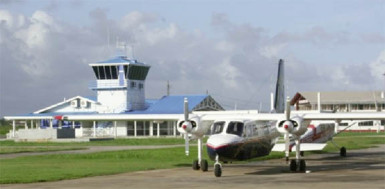A technical assistance mission to Guyana in January this year by the International Civil Aviation Organization (ICAO) designed to determine the country’s state of readiness in aviation safety oversight had determined that the country’s state of readiness was the lowest in the region.
According to the ICAO the country’s Accident and Incident Investigation (AIG) branch “does not have enough human resources to carry out its functions and responsibilities. In this regard it recommends “an arrangement with a regional accident and incident investigation” as “the solution to the lack of investigators.”
The pointed ICAO conclusion on the country’s insufficient human resources to cover the key area of accident and incident investigation fuels what has been an ongoing discourse in recent years arising out of the Guyana Civil Aviation Authority’s (GCAA) failure to produce and make public such reports.

An assessment of the visit here from January 19 – 23 by ICAO Regional Officers Marcelo Urena and Roberto Arca Jaurena the substantive purpose of which was to provide assistance to help states reach the Bogota Declaration Goal of 80 per cent effective implementation (EI) in safety oversight in 2016 noted that as of January this year, “Guyana shows… the lowest EI of the region.”
At the thirteenth meeting of Civil Aviation Authorities of the South American region held in Bogota, Colombia from December 4 – 6 2013, participating states passed a resolution committing themselves to a number of goals including the 80 per cent effective implementation of safety oversight goals and a reduction in the aviation accident rate to 50 per cent of the global rate. The Bogota Declaration also covers a range of other areas including aerodrome certification and state safety programmes.
The visit was to assess the level of progress made by Guyana in resolving questions raised in an audit conducted in Guyana in 2007 and provide technical assistance on how to complete, submit and update the Guyana Corrective Action Plan. (CAP).
The 2007 safety oversight audit of the local civil aviation system determined that effective implementation levels stood at 44.2 per cent, just over half of what is required under the Bogota Declaration.
In January 2014, a subsequent ICAO mission came here with a mandate to “assess the level of progress made by Guyana in resolving” the unsatisfactory protocol questions left in 2007. According to the ICAO report, “during the mission of 2014 Guyana showed no progress in resolving the not satisfactory protocol questions,” a situation that gave rise to the local civil aviation authorities being provided with technical advice on how to complete and submit the CAP.
The report says that the January 19 – 23 ICAO mission was conducted “to measure the level of progress reached by Guyana during 2014. It adds that based on a review of “all the audit areas” – legislation, organization, personnel licensing and training, aircraft operations, accident and investigation and air navigation services Guyana is yet to implement any proposed remedial action.
ICAO says in its report that a proposal which was being drafted by the Guyana Civil Aviation Authority “to amend the current primary aviation legislation… should be in accordance with a comprehensive and effective aviation law consistent with the environment and complexity of the state’s aviation activity and compliant with the requirements contained in the Convention on International Civil Aviation.” It is also required to detail “a clear division of responsibilities… between the regulatory functions and the service provision functions.”
With regard to personnel licensing and training, the ICAO report wants the local civil aviation authorities to “hire sufficient personnel and implement regulations, processes and procedures to ensure that personnel and organizations performing an aviation activity meet the established requirements before they are allowed to exercise the privileges of a licence, certificate, authorization and/or approval to conduct to conduct the relevant aviation activity.”
The report also calls on the GCAA to “adequately establish and document detailed air navigation safety inspectors job descriptions and develop policy, procedures and programmes for the short, medium and long-term staffing requirements of its Air Navigation Services safety inspectors as well as normally restricted civil aviation-related sites.”





